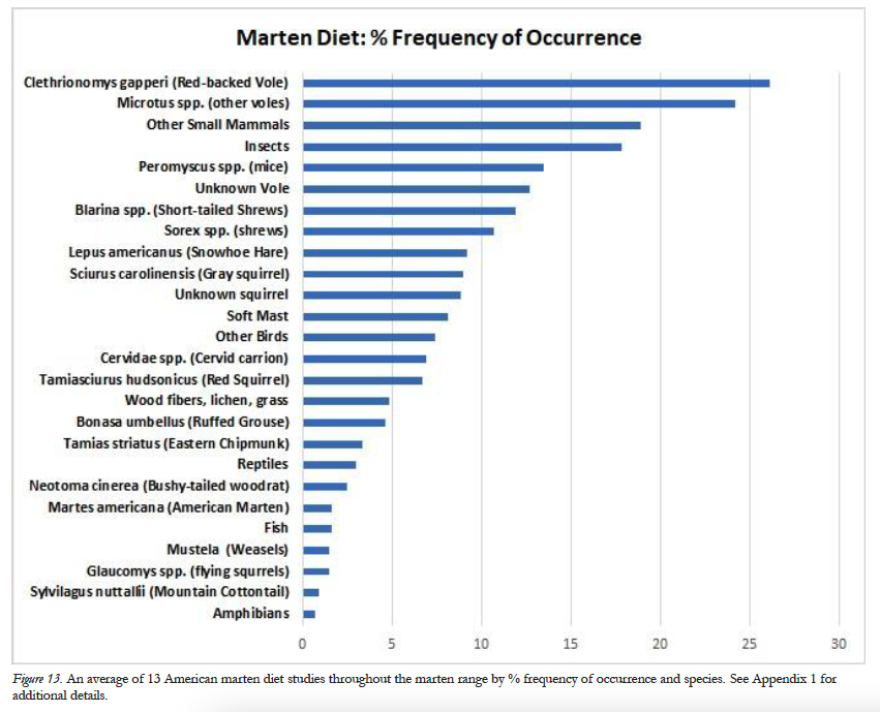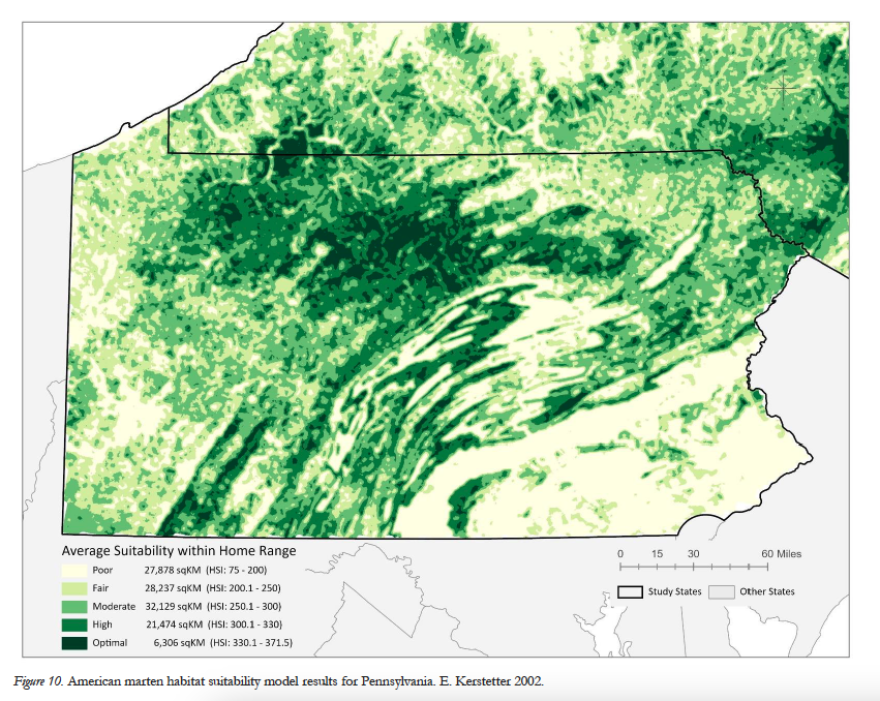The American marten — a small, mink-like creature once common in Pennsylvania’s forests — is no longer found in the state, thanks to overhunting and deforestation more than a century ago. But, the state Game Commission is holding open houses around the state as it considers bringing back the member of the mustelid family.
Kylie Orndorf, of Millheim, was one of the people to turn out for the Game Commission’s recent open house in Centre County.
“I was just really curious," Orndorf said. "I’ve seen articles about possibly introducing the American marten, and, not going to lie, they look really cute.”
Weighing in at 1 to 3 pounds, martens have brownish-black fur, perky ears and bushy tails. They're also known for their tawny necks and big paws.
While the cuteness factor may have been a draw, Orndorf wanted to learn more about why martens would be brought back and how.
“They haven’t been here in over a hundred years, so it would be great to see," she said. "I’ve seen an otter in the wild for the first time last year, and it was great.”
Tom Keller, furbearer biologist with the Game Commission, spent the last year developing a feasibility assessment for reintroducing the marten. He’s looked at everything from whether there is suitable habitat — there is, thanks to reforestation — to potential negative impacts.
They’re omnivores — so they’ll eat everything. One of the concerns that's come up is whether martens could hurt turkey and grouse populations by eating their eggs.
“It’s not going to majorly impact any of our native species here within the state,” Keller said.
Voles and other rodents, along with insects and plants, make up most of a marten's diet.
On the plus side to bringing them back, along with eating insects, they’re good at spreading seeds around the forest.
“A large portion of their diet is actually seeds. Hard mast and soft mast," Keller said. "They have a huge home range, 3 and a half miles square on average. For a tiny, 2-pound animal, that’s pretty significant.“

Pennsylvania, Keller said, has a history of reintroducing native species, including wild deer and turkeys, which has tourism and economic benefits.
“It’s not hard to look at things like elk and bald eagles and peregrines and how much money is spent just to come in and see those species, get a chance to see them, take pictures of them.”
The habitat in parts of northcentral and northwestern Pennsylvania would be most suitable for the martens, which were once common in the state.

Mark Ternent, the Game Commission's regional biologist in the northcentral region, noted the soft underfur and yellowish-orange bib of the marten.
"One of reasons why we contributed to their loss from Pennsylvania back in the turn of the century was the harvest because of their soft fur," he said. "Most people don’t realize how soft that underfur is.”

The Game Commission's next steps include developing a 10-year reintroduction and management plan, which would answer questions about where the state would get martens, where they would be introduced and how they would be monitored. That plan could go to the Game Commission board in July, followed by a 60-day public review and comment period. The Game Commission would bring it back to the board to address any questions, and the board could vote as early as January 2024 on whether to bring the marten back.
The Game Commission's upcoming public meetings are scheduled for:
- Thursday, March 30, 6-7:30 p.m. – Game Commission Northeast Region Office, 3917 Memorial Highway, Dallas, PA 18612;
- Tuesday, April 4, 6:30-8 p.m. – Game Commission Southwest Region Office, 4820 Route 711, Bolivar, PA 15923;
- Sunday, April 23, 2-3:30 p.m. – Game Commission Southcentral Region Office, 8627 William Penn Highway, Huntingdon, PA 16652;
- Saturday, June 3, 10 a.m. to 2 p.m. – Game Commission Northwest Region Office, 1509 Pittsburgh Road, Franklin, PA 16323.



